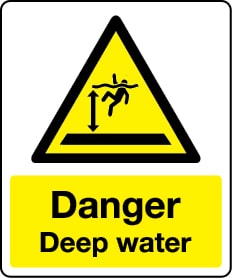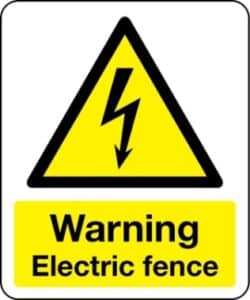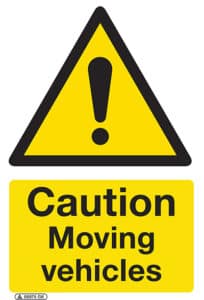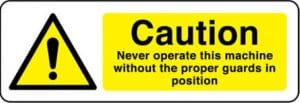Hazard safety signs play an essential role in the management of your safety, warning your staff and visitors of any potential dangers on the premises.
Hazard signs have a yellow triangle with a black pictogram or symbol on a yellow background with a black border. The yellow part has to be at least 50% of the area of the sign. Many of the hazard symbols currently used have been updated to bring them in line with the new ISO 7010 legislation.
Each sign is categorised as the above depending on the severity of the risk. For example, signs with the word “Danger” are used where the risk is deemed to be higher than those signs using the word caution.
The yellow part has to be at least 50% of the area of the sign. Many of the hazard symbols currently used have been updated to bring them in line with the new ISO 7010 legislation.
The three different types of hazard signs
There are typically three different types of Hazard sign:
- Danger
- Warning
- Caution
Each sign is categorised as the above depending on the severity of the risk. For example, signs with the word “Danger” are used where the risk is deemed to be higher than those signs using the word caution.
Danger Signs
What do Danger Signs mean?
These are used for a high level of risk which, if not avoided, may result in death or serious injury.
They are typically only used in situations that have a high probability of death or severe injury. Danger signs should not be used for situations covering potential property damage unless personal injury risk is present.
Where are Danger Signs used?
Danger signs are usually posted in places that have:
- Buildings that have Incomplete scaffolding
- Areas with high voltage electricity
- Live wires nearby
- Dangerous substances and chemicals
- On fragile roofs
Examples of Danger Signs
| Danger Deep Water Signs | Hazardous Waste Signs |
 |
 |
Warning Signs
What do Warning Signs mean?
Warning signs should be used for a medium level risk. Medium-level risk signs are signs that if not avoided, may result in injury or death.
Warning signs should be used in hazardous situations which have some probability of death or major injury.
Warning signs should not be used for situations covering potential property damage unless personal injury risk is a possibility.
Where are Warning Signs used?
You can expect to see warning signs in many different places, such as:
- Muddy and slippery roads
- Field with Electric fences
- Machine operators nearby
- Harmful fumes in the area
- Hazardous areas
- Swimming pools or lakes with deep water
Examples of warning sign
| Overhead Cable Signs | Electric Fence Signs |
 |
 |
Caution Signs
What do Caution signs mean?
Caution signs should be used for a low-level risk which, if not avoided, may result in a minor injury.
These signs should be used in hazardous situations which may result in a minor injury.
They should not be used when there is a possibility of death or severe injury. These signs should be used to warn of the lowest hazardous risks.
Where are Caution Signs used?
You can expect to see Caution signs in the following places:
- Slippery floor surfaces
- Areas with trip hazards
- Speed ramps
- Machines operating
- Workers operating below or above
- Taps with hot water
Examples of caution signs
| Moving Vehicle Signs | Heavy Machinery Advice Signs |
 |
 |
See our article: Safety Signs, Symbols and Colour Codes – a Simple Guide for more information on the use of safety symbols and graphical images.
